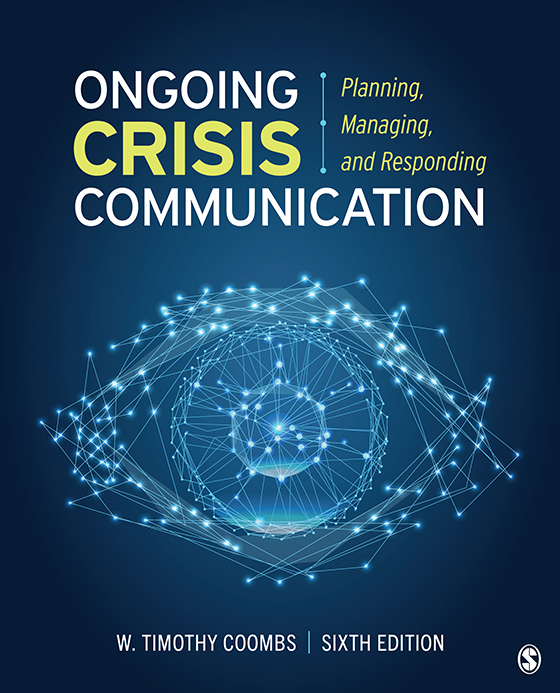Ongoing Crisis Communication
Planning, Managing, and Responding
Tim Coombs - University of Central Florida, USA
Ongoing Crisis Communication: Planning, Managing, and Responding provides an integrated approach to crisis communication that spans the entire crisis management process and crosses various disciplines. A truly integrative and comprehensive text, this book explains how crisis management can prevent or reduce the threats of a crisis, providing guidelines for how best to act and react in an emergency situation. The Sixth Edition includes new coverage of artificial intelligence and risk management, social media, resilience training for the community, and draws upon recent work from management, public relations, organizational psychology, marketing, organizational communication, and computer-mediated communication research.
Available formats
See what’s new to this edition by selecting the Features tab on this page. Should you need additional information or have questions regarding the HEOA information provided for this title, including what is new to this edition, please email sageheoa@sagepub.com. Please include your name, contact information, and the name of the title for which you would like more information. For information on the HEOA, please go to http://ed.gov/policy/highered/leg/hea08/index.html.
For assistance with your order: Please email us at textsales@sagepub.com or connect with your SAGE representative.
SAGE
2455 Teller Road
Thousand Oaks, CA 91320
www.sagepub.com
- New coverage of artificial intelligence and risk management, social media, and resilience training for the community.
- New discussions of the social aspect of crisis management, how working with people and the relationships people form affects crisis management.
- Chapter 2 “Risk as the Foundation for Crisis Management and Crisis Communication” now includes new section on risk in the organization context and new section on stakeholders and risk.
- Chapter 3 “The Crisis Mitigation Process: Building Crisis Resistant Organizations”, written through the lens of Boyd’s OODA Loop, demonstrates how risk mitigation relates to crisis management and crisis communication. This chapter now features new discussions of about unknown unknowns, artificial intelligence and risk management, and brand heritage crises, as well as expanded discussions of paracrisis as risk management.
- Chapter 4 “Crisis Preparing: Part I” includes new discussions of psychological safety, curiosity, scenario-based training, and resilience training for the community.
- Chapter 6 "Recognizing Crises" includes finding crises with monitoring services, new section on the moral mum effect, new section of using AI to find crises, and expanded discussions of heuristic biases.
- Learning objectives appear at the beginning of every chapter.
- Updated examples in every chapter present recent crises and the effect of crisis communication on the outcomes.
KEY FEATURES:
- Crisis management is integrated with three other proactive management functions—issues management, risk management, and reputation management—demonstrating that the best way to manage a crisis is to prevent one.
- The term crisis is refined by discussing the differences between traditional and social media crises.
- What Would You Do? mini-cases allow readers to apply book concepts to real crisis events. Many of the cases use running examples and appear in two or three chapters to illustrate how crises evolve.
- Discussion questions at the end of chapters help readers extend their understanding of the material.
- Crisis Leadership Competencies boxes for each chapter identify ways that leaders can facilitate and enhance crisis communication efforts.
- An Epilogue summarizes key lessons for managers from the vast crisis communication research literature and identifies important trends that will shape the near future of crisis communication.

